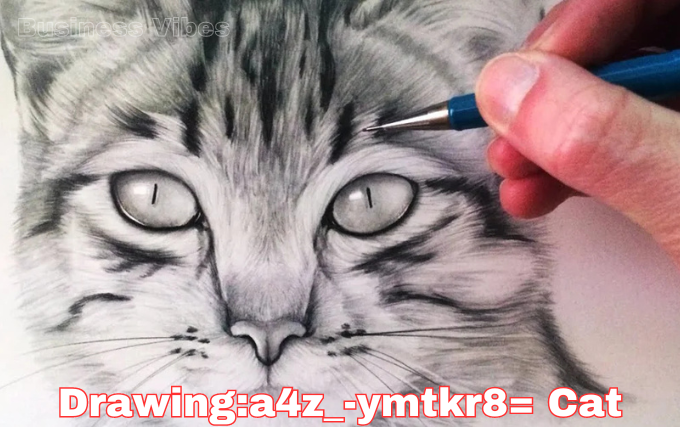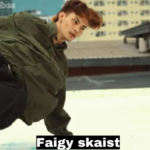Cats have always been a beloved subject in art, capturing the elegance, mystery, and playfulness of these fascinating creatures. Whether you’re an aspiring artist or simply someone who enjoys sketching as a hobby, learning how to draw a cat can be both challenging and rewarding. In this guide, we will dive deep into the process of drawing the “A4Z_-YMTKR8= cat,” a term that could symbolize a unique or imaginative representation of a cat. This article will cover everything from basic techniques to more advanced approaches for mastering the art of drawing cats.
Introduction to Cat Drawing: Why Cats Are Popular in Art
Drawing cats has long been a favorite pastime for artists of all skill levels. From ancient Egyptian murals to modern-day digital art, cats have been depicted in countless styles. Their sleek body shapes, piercing eyes, and expressive postures make them fascinating subjects to draw.
The “A4Z_-YMTKR8= cat” may represent a more abstract or personalized approach to feline art, encouraging artists to explore creative interpretations. This guide will help you develop your drawing skills to bring any version of a cat to life, whether it’s realistic or stylized.
Tools and Materials You Need for Cat Drawing
Basic Supplies
Before you start drawing, it’s important to gather the necessary tools. Here’s a list of basic supplies you’ll need to create your A4Z_-YMTKR8= cat:
- Pencils: Graphite pencils ranging from 2H (lighter) to 6B (darker) will give you control over shading and outlines.
- Erasers: Both a kneaded eraser and a precision eraser are essential for fixing mistakes and adding highlights.
- Paper: Smooth sketching paper or an A4-sized sheet is ideal for detailed drawings.
- Blending stumps: These are useful for softening shading and creating smooth transitions.
- Ruler and compass: For creating proportional outlines and precise shapes, these tools can be very helpful.
- Inking pens (optional): If you plan to finalize your sketch in ink, fine-liner pens are great for adding crisp lines.
Advanced Tools for Digital Artists
If you’re a digital artist, you can create your A4Z_-YMTKR8= cat drawing using:
- Graphic tablet: Tools like a Wacom tablet or iPad Pro allow you to draw with precision.
- Digital software: Programs like Adobe Photoshop, Procreate, or Krita offer a variety of brushes, layers, and effects that can enhance your drawing.
Step-by-Step Guide to Drawing a Cat
1. Start with Basic Shapes
Drawing a cat begins with simple shapes that serve as a framework. Start by sketching basic circles and ovals to outline the cat’s head and body. Cats have sleek, elongated bodies, so you’ll want to emphasize that from the beginning.
- Draw an oval for the body, slightly tilted forward to capture a cat’s natural posture.
- Add a circle for the head, making sure it’s proportional to the body.
- Use light, gentle strokes so that you can easily adjust the shapes as you refine the sketch.
2. Outline the Legs and Tail
Next, sketch out the legs and tail. Cats are known for their graceful, elongated limbs. Begin by drawing simple lines for the front and back legs. The front legs should appear straighter, while the back legs can be drawn with a slight bend, as cats often sit in a resting pose.
- Sketch out the tail as a long, flowing curve. You can experiment with the position, whether the tail is straight, curled, or resting on the ground.
3. Focus on the Head and Facial Features
The face is one of the most crucial parts of your A4Z_-YMTKR8= cat drawing, as it conveys the cat’s personality and mood. Start by lightly sketching the facial guidelines, which will help you place the eyes, nose, and mouth in the right position.
- Eyes: Cats’ eyes are large and almond-shaped, often with intense, captivating pupils. Make sure the eyes are positioned symmetrically on the face.
- Nose and mouth: The nose is small and triangular, placed slightly below the midpoint of the head. The mouth can be drawn with a small “W” shape.
- Ears: Cats’ ears are pointed and sit high on the head. You can play with the angle of the ears depending on the mood you want to portray.
4. Add Fur and Texture
Once you have the basic outline, it’s time to add the fur texture. Fur can add a lot of character to your cat drawing, making it look more realistic or stylized, depending on your approach.
- Short fur: Use short, light strokes to create a smooth texture for cats with short coats.
- Long fur: For cats with longer fur, use longer, wavy strokes to depict volume and flow.
- Whiskers: Don’t forget to draw the whiskers! These can be added with light, fine lines extending from the muzzle.
5. Refine the Details and Add Shading
At this stage, begin refining your drawing by adding details and shading. Pay attention to the direction of light in your drawing to determine where the shadows should fall.
- Shading the body: Use your pencils or blending tools to create smooth transitions between light and dark areas, giving the drawing depth.
- Highlighting the eyes: A small white dot in each eye can represent reflected light, adding life to your drawing.
- Fur shading: Focus on how the fur changes with the curves of the cat’s body, adding more shading in areas where the fur overlaps or folds.
6. Adding a Background or Creative Elements
If you’re working on a creative version like the A4Z_-YMTKR8= cat, you might want to add unique elements to the drawing. This could include abstract backgrounds, playful designs, or stylized patterns. For example:
- Abstract lines or shapes: These can add a modern twist to your drawing.
- Whimsical surroundings: Incorporate fun, imaginative elements like floating objects, flowers, or dreamlike scenery around your cat.
- Color and vibrancy: Use colored pencils or digital painting tools to give your drawing an eye-catching finish.
Common Mistakes and How to Avoid Them
1. Overcomplicating the Proportions
One of the most common mistakes when drawing cats is overcomplicating the proportions. Remember, cats have sleek, simple lines. Avoid making the body too bulky or the legs too short.
- Solution: Step back frequently to look at your drawing from a distance to ensure the proportions look natural.
2. Drawing Eyes that Lack Symmetry
Getting the eyes right is often tricky. If the eyes are uneven, it can throw off the entire drawing.
- Solution: Use guidelines on the face to help you position the eyes symmetrically.
3. Rushing the Fur Texture
It can be tempting to rush through the fur to finish the drawing quickly, but this is where many cat drawings fall short. Without attention to the fur, the drawing can look flat or unrealistic.
- Solution: Take your time with the fur texture, building it up slowly with light strokes to achieve a natural look.
How to Practice and Improve Your Cat Drawing Skills
Regular Practice
Like any art form, drawing requires practice. Set aside time each day to sketch cats from different angles, focusing on various poses and expressions.
Study from Real Life and Photos
Observing real cats or studying photographs can give you a better sense of their anatomy and movements. Pay attention to how they stretch, sit, and pounce. These movements can provide great references for dynamic poses.
Experiment with Different Styles
Don’t be afraid to experiment with different styles. Whether you prefer a realistic approach or a cartoonish version of the A4Z_-YMTKR8= cat, practicing different techniques will improve your overall skills.
Conclusion
Drawing a cat, particularly one as unique as the A4Z_-YMTKR8= cat, is a rewarding experience that challenges your artistic abilities while allowing for creative expression. By following this comprehensive guide, you can develop your drawing skills, experiment with various styles, and create a masterpiece that captures the elegance and charm of these beloved animals. Whether you’re sketching for fun or working on a serious art project, the process of drawing cats offers endless possibilities for creativity and improvement. Keep practicing, stay inspired, and enjoy the journey of becoming a master cat artist!








